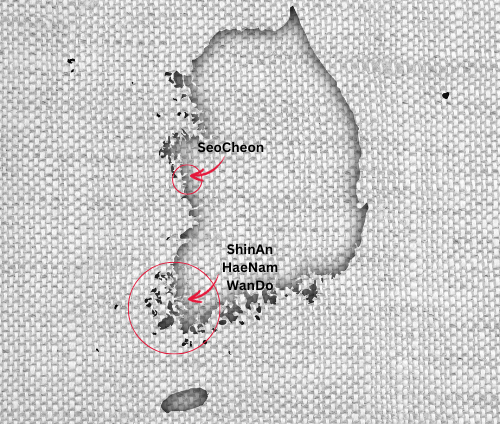3 factors that determine the quality of Korean Seaweed
When I was young, due to the nature of my father’s job as a seaweed distributor, our house was always full of grade A seaweed. The raw seaweed without any additions was full of sweetness and crispy.
So all seaweed is equally delicious. I just thought:
However, as I studied and prepared for the business, I learned that there are different types of seaweed depending on the production area, shape, and origin, and the taste is also different accordingly.
While studying seaweed factories, I often asked my dad which manufacturers he felt were good.
There are about 270 seaweed processing companies in Korea, and my father knew all of them except for the really small ones.
And my dad’s answer was pretty much one thing.
‘You can’t use those seaweed products. Those are not good’
As I continued to listen to that, I thought to myself, ‘Why does he say almost companies except his partners that those products are not good?’.
It turned out that my father’s company, ‘Shinan Distribution’, had a reputation for handling only good seaweed.
One day, while looking for seaweed that fit the buyer’s budget, I had a meeting with a factory in Incheon.
As soon as the factory owner heard that I was the daughter of ‘Shinan Distribution,’ he said, ‘Oh, you come from a place that only deals in expensive(?) seaweed.’ This is how I found out that reputation.
But just because my father insist on using only good seaweed, will ordinary consumers be able to understand our efforts?
I hoped that more and more people would know accurate information about seaweed like other consumer goods and consume it wisely.
This is because it was unfortunate that seaweed was distributed regardless of its grade according to the price set in the market.
So what determines the quality of seaweed?
1. One-Stop Process
According to the Korea International Trade Association (KITA), there are about 2,000 seaweed farmers, including seaweed farmers, and about 270 seaweed processing companies.
Most seaweed processing companies do not produce their own seaweed but instead choose to purchase raw and dried seaweed.
Therefore, good and expensive seaweed naturally goes to processing plants directly operated by aquaculture companies.
Therefore, seaweed from companies with this one-stop process has excellent quality compared to price.
Above all, since it is produced and processed directly, quality control is relatively easy.
2. Winter
Just as seasonal fruits are the best, winter seaweed is the most delicious.
This is because the temperature of the sea must be lowered for them to grow well and taste richer.
Therefore, ‘fresh seaweed’, which is distributed in the form of dried seaweed without any processing, is most noticeable in winter.
Many seaweed production areas are experiencing difficulties due to the recent warming phenomenon, and seaweed production becomes a hot topic every year in the seaweed industry.
3. Region
The first seaweed farm was Gwangyang in South Jeolla Province, and production is recorded to have started around 1640.
The production facility was developed in Jeollanam-do (Like a state of United States), and its infrastructure has become the most developed in the country.
And the algae ecosystem, which plays an important role as the source of seaweed, is abundant in the coastal waters of Jeollanam-do and has a positive impact on quality.
Haenam, Wando, and Shinan in Jeollanam-do are representative seaweed production areas.

About 77.4% of domestic production comes from Jeollanam-do, and about 6.2% of Seocheon seaweed from Chungcheongnam-do, also known as Daecheon/Gwangcheon seaweed, is produced. (Daecheon and Gwangcheon areas are places where raw seaweed cannot be produced, so there are many places where seaweed is purchased and processed.)
In addition, the taste can vary depending on the way to dry the seaweed, processed, raw material content, etc.
But the most important factor that all the experts I met say is ‘what kind of raw material is used?’
Next, we will talk about how to visually check the grade of seaweed.
